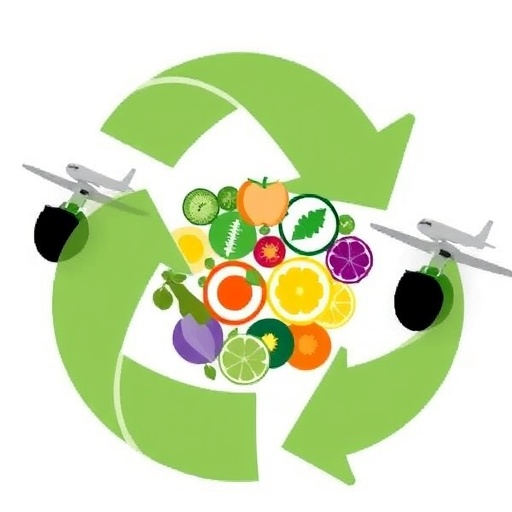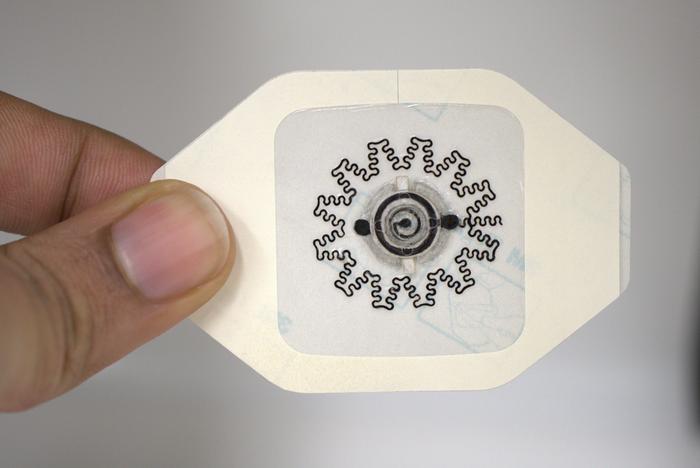Researchers at the University of Illinois Urbana-Champaign have pioneered a groundbreaking method for generating sustainable aviation fuel (SAF) by transforming food waste into biocrude oil. The urgency of this innovation cannot be overstated, as increased air travel has escalated the demand for jet fuel, which is a significant source of greenhouse gas emissions. The study, published in the esteemed journal Nature Communications, elucidates their unique approach to addressing the aviation sector’s environmental challenges while ensuring that the resulting fuel meets rigorous industry standards without the need for fossil fuel blends.
At the heart of this research is a thermochemical conversion technique known as hydrothermal liquefaction (HTL). This innovative process replicates the natural formation of crude oil, applying high heat and pressure to wet biomass, specifically food waste, to synthesize biocrude oil. The versatility of HTL allows it to utilize a broad spectrum of organic materials, making it a promising solution for converting various waste products into valuable energy sources. The successful transformation of food waste into usable fuel exemplifies a crucial step toward sustainability in transportation.
Food waste itself is an alarming global issue, with over 30% of edible food discarded each year across the supply chain—from agricultural production to household waste. This not only exacerbates food insecurity but also contributes significantly to greenhouse gas emissions, especially when waste decomposes in landfills and contaminates water sources. By harnessing this waste through HTL, the researchers not only provide a method for reducing environmental impact but also promote the concept of sustainability in the aviation industry.
The research team meticulously crafted a three-step process to refine biocrude into aviable transport fuel. Initially, impurities such as moisture, ash, and salts are eliminated from the crude oil. Following this purification stage, catalytic hydrotreating is employed to remove unwanted constituents like nitrogen, oxygen, and sulfur. The result is a refined hydrocarbon mix suitable for aviation fuel. This breakthrough not only reutilizes food waste but also addresses the pressing need for cleaner energy alternatives in the aviation sector.
Lead author Sabrina Summers, who recently earned her doctoral degree from the Department of Agricultural and Biological Engineering, emphasizes that the effectiveness of their approach is rooted in the selection of suitable catalysts. After experimenting with various options, the researchers designated cobalt molybdenum as the most effective catalyst for facilitating the necessary reactions to refine biocrude into jet fuel. This strategic selection sets this research apart, showcasing the importance of catalyst efficiency in future developments within this field.
Their rigorous testing revealed that the sustainable aviation fuel produced from food waste passed advanced pre-screening tests set by the American Society for Testing and Materials (ASTM) and the Federal Aviation Administration (FAA). Impressively, this SAF sample adhered to all the specifications required for conventional jet fuel without the need for any additive or blending with fossil fuels. This not only validates their methodology but also positions their innovation as a legitimate contender for commercial aviation fuel.
The scalable nature of this technology bolsters its potential for widespread commercialization. Yuanhui Zhang, a co-author of the study and a professor in the same department, asserts that agriculture will play a critical role in providing the diverse renewable feedstocks necessary to meet aviation’s decarbonization goals. Their method can be utilized to produce various forms of sustainable fuels beyond just jet fuel, paving the way for a broader impact on the energy landscape.
In an era where sustainability is a primary concern, this research contributes meaningfully to the concept of the circular bioeconomy. Unlike conventional processes that adhere to a linear pattern of production and disposal, the approach employed by Zhang and Summers encapsulates the essence of circularity—taking waste materials and converting them into energy and usable products. This not only mitigates waste but also enhances resource efficiency in multiple industries, from aviation to plastics.
The implications of this research extend beyond immediate environmental concerns; they open doors for extensive commercial opportunities. As industry stakeholders grapple with climate change and the imperative to adopt greener practices, innovations like the conversion of food waste into aviation fuel could redefine how we perceive waste and energy production. The potential for growth in this sector is immense, especially as policymakers and the public become increasingly supportive of sustainable initiatives.
Moving forward, the expected impact of this study hinges on continued collaboration between academia and industry. The transition from laboratory successes to commercial viability involves addressing engineering and economic challenges that will arise during the scale-up of such processes. This transition is essential not only for the advancement of SAF but also for broader initiatives aimed at establishing a more sustainable energy economy.
In conclusion, the research conducted at the University of Illinois Urbana-Champaign stands as a beacon of hope for a future where aviation can coexist harmoniously with environmental sustainability. By harnessing food waste and turning it into a viable energy source, they have not only tackled an existing problem but have also positioned sustainable aviation fuel as a feasible option for the aviation industry’s future. As the world increasingly stands at the crossroads of climate action, innovations such as these are vital roadmaps showing the way forward.
The paper detailing this groundbreaking research, titled “From food waste to sustainable aviation fuel: cobalt molybdenum catalysis of pretreated hydrothermal liquefaction biocrude,” is published in Nature Communications, further legitimizing the methods and impacts discussed. With the backing of the U.S. Department of Energy and support from the National Science Foundation Graduate Research Fellowship Program, this research highlights the integral role that funding and collaboration play in driving scientific advancements.
As we navigate through the challenges posed by climate change, the importance of converting waste into valuable resources cannot be understated. The work at the University of Illinois is a prime example of how innovation and sustainability can blend seamlessly, forging a path toward a cleaner, more sustainable future.
Subject of Research: Conversion of food waste into sustainable aviation fuel
Article Title: From food waste to sustainable aviation fuel: cobalt molybdenum catalysis of pretreated hydrothermal liquefaction biocrude
News Publication Date: 30-Oct-2025
Web References: Nature Communications
References: DOI: 10.1038/s41467-025-64645-y
Image Credits: Credit: Marianne Stein
Tags: biocrude oil from food wastecircular economy in aviationenvironmental sustainability in transportationfood waste management strategieshydrothermal liquefaction technologyinnovative waste-to-energy solutionsreducing greenhouse gas emissions from air travelrenewable energy from wastesustainable aviation fuel productionsustainable fuel alternatives for aviationtransforming food waste into energyUniversity of Illinois research initiatives






